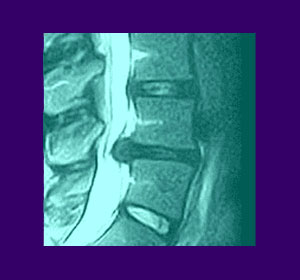
Demyelinating disorders create impediments to proper neurological functionality in the central and/or peripheral nervous systems. Symptoms range greatly and are often severe and difficult to treat, if not impossible.
Back and neck pain patients often demonstrate symptoms that may be related to a myelin-damaging disease or process. These symptoms include paresthesia, muscular weakness and many other expressions that may also come about from a wide range of possible spinal and nonspinal causations, such as trauma, vertebral canal stenosis and virtually all manner of pathological structurally-motivated dorsalgia concerns.
When symptoms are severe, diagnosticians will often first check to be sure that some disease process is not damaging the structures of the CNS or PNS, such as through the myelin-destroying conditions detailed in this very essay. This dialog focuses on providing back and neck pain sufferers with a laymen’s background regarding the myelin-damaging disorders that might play a role in rare instances of chronic pain syndromes.
Demyelinating Definitions
Myelin is the name of the insulating sheath that surrounds many nerve fibers in the body. Myelin exists around neuron components of the central nervous system, as well as in the peripheral nervous system.
Myelination is the process by which this protective covering is created and this process begins very early in life. Therefore, demyelination describes the process of removing these protective sheaths from nerves, through the processes of injury or disease.
Myelin is composed of water, proteins and fatty tissue. It surrounds a neuron and facilitates much faster transmission of neurological signals from one anatomical location to another. In fact, the speed of nerve signals over myelinated neurons is about 100 times faster than over nonmyelinated nerve fibers due to the myelin’s ability to provide saltatory conduction of neurological messages over vast anatomical distances.
In the central nervous system, myelin is composed of specialized tissues called oligodendrocytes. Meanwhile, in the peripheral nervous system, it is made from structures called Schwann cells.
Myelin is a major step forward in evolution and is one of the factors that provide humans with such fast nerve response time and the ability to develop a large and complicated anatomy.
Demyelinating Causes
Multiple sclerosis is by far the most common causation of disease-related myelin trauma. Other common conditions that affect the central nerveous system myelin components include: CNS neuropathy conditions, central pontine myelinolysis, various CNS myelopathy conditions, leukoencephalopathy conditions, encephalomyelitis conditions, leukodystrophies and Canavan disease.
Smaller peripheral nerves can also come under local or systemic attack by such conditions as: Guillain-Barré syndrome, inflammatory polyneuropathy conditions, anti-MAG peripheral neuropathy, Charcot-Marie-Tooth disease, peripheral neuropathy and myelopathy conditions, progressive inflammatory neuropathy and pernicious anemia.
Demyelination can also occur due to acute or chronic trauma to the neurological structures of the spinal cord or spinal nerves. These are the most commonly seen instances of myelin damage in most back and neck pain sufferers. Direct causes of nerve sheath trauma include any manner of compression that actually damages the nerve, followed by an inflammatory response that exacerbates the damage and may create a chronic compression problem.
Spinal nerve sheath damage might result in temporary or permanent reduction in signal capacity at one or more affected levels. Meanwhile, myelin trauma in the spinal cord will produce temporary or permanent deficits in neurological functionality from the affected levels down.
Demyelinating Symptoms
Most back and neck pain sufferers come across these various terms on diagnostic evaluation reports, such as CT scans, electroencephalography, electromyography and MRI studies. If a myelin-damaging disease is suspected, further testing using cerebrospinal fluid analysis or quantitative proton magnetic resonance spectroscopy may be required. Neurologists or orthopedists often order these elaborate diagnostic procedures to be sure that there is not some variety of disease or injury that is damaging the myelin sheaths in the spinal structures and creating the symptomatic expression.
Finding a myelin-damaging condition in the average back or neck pain patient is very rare. However, in cases of spinal cord trauma, syrinx formation or known neurological disease, the finding can help to explain many possible symptoms including any or all of the following: tingling, numbness, muscular weakness, blurry and double vision, loss of vision or hearing, ringing in the ears, impaired ability to speak or reason, extreme temperature sensitivity, loss of coordination, balance problems, the inability to stand upright, sexual dysfunction and incontinence.





